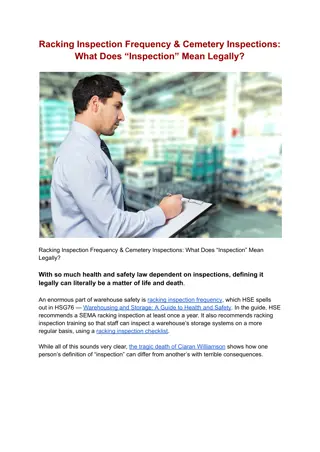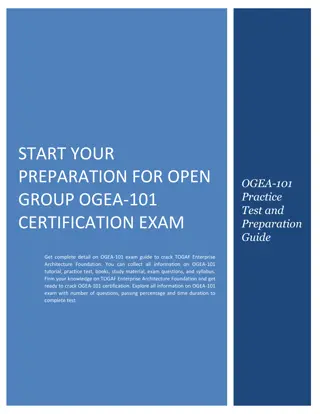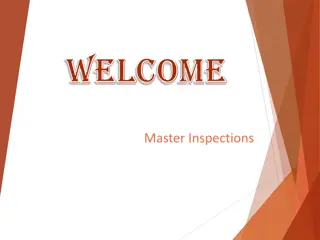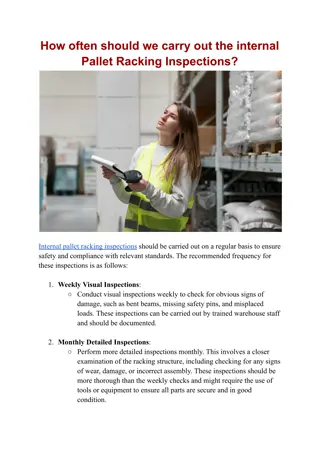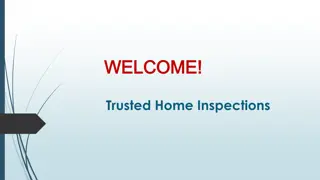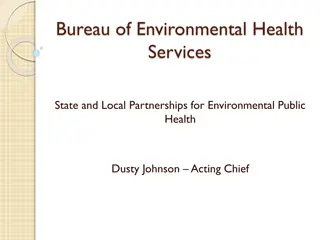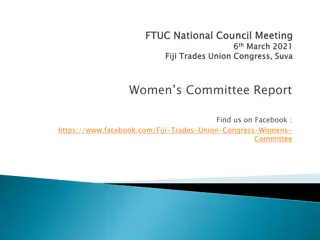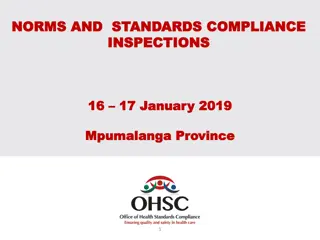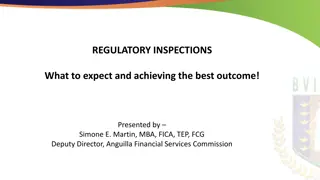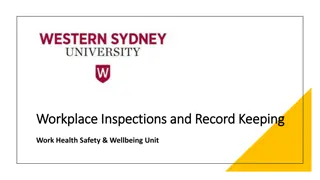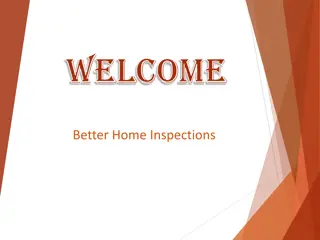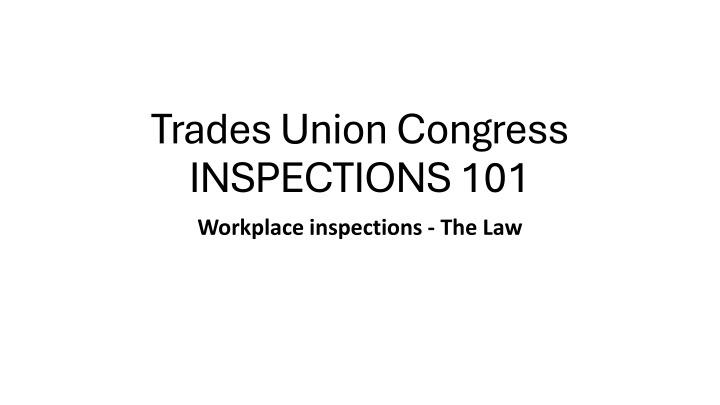
Workplace Inspections and Safety Laws: Regulations Explained
Learn about workplace inspections and safety regulations empowered by legislation, including the roles of Health and Safety Representatives, triggers for inspections, and employer obligations. Understand how these regulations contribute to maintaining a safe work environment and preventing accidents. Stay informed to ensure compliance and promote a culture of safety and well-being within your organization.
Download Presentation

Please find below an Image/Link to download the presentation.
The content on the website is provided AS IS for your information and personal use only. It may not be sold, licensed, or shared on other websites without obtaining consent from the author. If you encounter any issues during the download, it is possible that the publisher has removed the file from their server.
You are allowed to download the files provided on this website for personal or commercial use, subject to the condition that they are used lawfully. All files are the property of their respective owners.
The content on the website is provided AS IS for your information and personal use only. It may not be sold, licensed, or shared on other websites without obtaining consent from the author.
E N D
Presentation Transcript
Trades Union Congress INSPECTIONS 101 Workplace inspections - The Law
Health and Safety Representatives are empowered by the following laws/legislation: Regulation 5 Inspections of the Workplace Regulation 6 Inspections following notifiable accidents, occurrences and diseases Regulation 7 Inspection of documents and provision of information
Regulation 5 (1) Inspections of the Workplace: Safety reps are entitled to inspect the workplace, so long as they have written to the employer, giving reasonable notice. Legally, reps have powers to inspect the workplace every three months. However, good practice would see an increase in this frequency. Agreements with the employer, dependent on risk and wider business context and strong union organising would dictate this
Regulation 5 (2) Inspections may be triggered when the following take place: Introduction of new technology or processes Updated health and safety legislation published by The Health and Safety Executive (HSE)
Regulation 5 (3) The Employer shall provide such facilities and assistance as the Safety Representatives may reasonably require, including: Facilities for independent investigation (conducted by reps!) An area for private discussion with employees/members (for the purpose of carrying out an investigation under this regulation)
Regulation 6 (1) Inspections following notifiable accidents, occurrences and diseases: Where there has been any of the above notifiable items, and it is safe to carry out an inspection, in the interests of employees, reps can carry out an inspection within the workplace.
Regulation 6 continued Notifiable accident or dangerous occurrences and Notifiable disease mean any accident, dangerous occurrence or diseases, as the case may be, notice of which is required to be given by virtue of any relevant statutory provisions within the meaning of Section 53(1) of the 1974 Act. - The Safety Representatives and Safety Committees Regulations 1977 https://www.legislation.gov.uk/uksi/1977/500/made?view=plain#:~:text=The%20Safety%20Representatives%20and% 20Safety%20Committees%20Regulations%201977
Regulation 7 Inspection of document and provision of information: Section 2 (4) of the 1974 Act entitles Safety Reps to inspect and take copies of any relevevance to the workplace/workers. So long as the employer has been given reasonable notice. Exceptions are: Disclosure against the interests of national security Any information relation specifically to an individual Legal privilege


